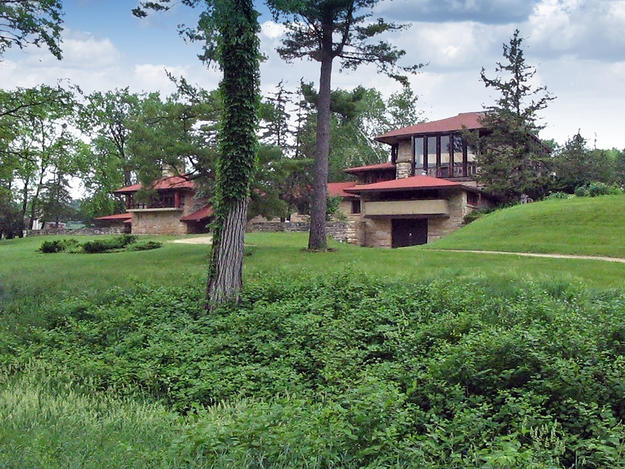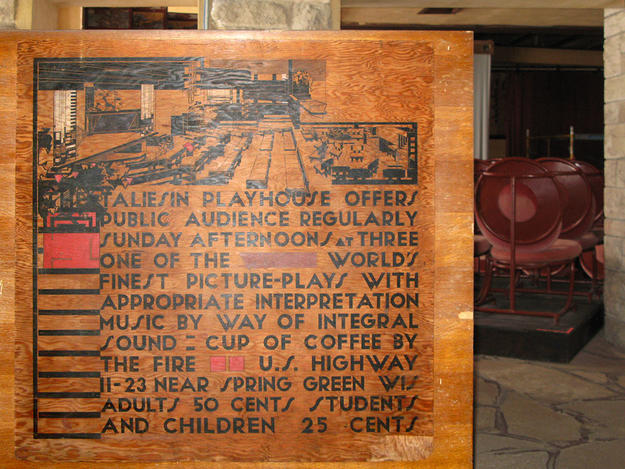2010 and 2014 World Monuments Watch
Taliesin is situated among the hills and rocky outcroppings of Wisconsin’s Driftless Area, and serves as a reminder of one of America’s most influential architects. In 1903, Frank Lloyd Wright completed construction on the Hillside Home School, consisting of an assembly hall, offices, a library, classrooms, and a gymnasium. The school was built with locally quarried stone of different neutral colors, textures, and glazing. Just to the north, Wright built the sprawling residential and studio complex of Taliesin in 1911. The school closed in 1915 and deteriorated over the next several years, but in 1932 Wright rehabilitated it for an architectural training program. The gym was converted into the Hillside Theater to host movies and performances for the public, and in the late 1930s the drafting school and dormitory were completed. The interior spaces of the complex, courtyards, terraces, and landscape continued to evolve under Wright’s vision until his death in 1959.
Taliesin was Wright’s lifelong home, but it also functioned as a laboratory of design and innovation for the architect and his students. It is now regarded as one of Wright’s most significant expressions of organic architecture in the Prairie style. Its low-lying structures seem in harmony with the rugged landscape, neither feature imposing upon the other.
The forces of nature, including exposure to the elements over time, have put the complex at risk. Taliesin was included on the 2010 World Monuments Watch to draw attention to these issues, and several parts of the complex were restored soon after including the bedroom, guest and west wings of Taliesen, and the masonry wall of the Hillside Home School’s east assembly hall. The site was included on the Watch again in 2014 because the Hillside Theater, the most public of the spaces at Taliesin, was suffering from water infiltration, perimeter drainage issues, a failing roof, and other problems with the building envelope. Due to the experimental nature of the design and materials used to construct the complex, the structures face special conservation challenges requiring extensive research and innovative solutions. Additional research and restoration work, increased awareness of their architectural significance, enhanced protection and interpretation, greater community engagement, and improved knowledge of construction methodologies would help to develop sustainable stewardship of Wright’s legacy.
Since the Watch
In July 2019, UNESCO designtated eight works by Frank Lloyd Wright as World Heritage sites, including Taliesin and Taliesin West, another Watch site. Wright is the only American architect to be honored with such a designation.



